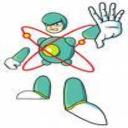Yahoo Answers is shutting down on May 4th, 2021 (Eastern Time) and the Yahoo Answers website is now in read-only mode. There will be no changes to other Yahoo properties or services, or your Yahoo account. You can find more information about the Yahoo Answers shutdown and how to download your data on this help page.
Trending News
Finding the Height of the Center Mass?
An appliance box has a square base with sides of length L, and has rectangular sides with a height of 4L. The top of the box is missing. The box is made from cardboard of uniform thickness and density. What is the height of the center of mass of this open box, with respect to the bottom of the box?
I am beyond lost on how to even set this up...any advice? I thought it would be 4* 4L^2 * 4L/2 to get 32L^3
and the total box would be 16L^2 so I go 2L and that is NOT right. Any suggestions?
32L/17
4L/5
8L/17
16L/17
2L
1 Answer
- electron1Lv 78 years agoFavorite Answer
http://answers.yahoo.com/question/index?qid=200811...
I found the problem and answer at the website above.
An appliance box has a square base with sides of length L, and has rectangular sides with a height of 3L. The top of the box is missing. The box is made from cardboard of uniform thickness and density. What is the height of the center of mass of this open box, with respect to the bottom of the box?
Let's take moments of mass about the bottom.
Moments of the bottom square is zero because it is already at the bottom.
Moments about the sides squares = 4 * 3L^2 * 3L/2 = 18L^3
Total mass of box = 4*3L^2 + L^2 = 13L^2
COG = 18L^3 / 13L^2 = 18/13 * L
Let’s use the same method on your problem.
An appliance box has a square base with sides of length L, and has rectangular sides with a height of 4L. The top of the box is missing. The box is made from cardboard of uniform thickness and density. What is the height of the center of mass of this open box, with respect to the bottom of the box?
Moments about the sides squares = 4 * 4L^2 * 4L/2 = 32L^3
Total mass of box = 4 * 4L^2 + L^2 = 17L^2
COG = 32L^3/17L^2 = 32L/17
Here is another way to determine the center of mass of the box.
The center of mass of the box is on a vertical line, which is directly above the center of the base.
Weight = mass * g
Mass = Volume * Density, Volume = Area * Thickness, Mass = Area * Thickness * Density
Weight = Area * Thickness * Density * g
In this problem, the thickness and density is the same for the base and sides of the box. g = 9.8 m/s^2. Since, the thickness, density, and g are constants, the weight of the box is directly proportional to the area. If you leave the thickness, density, and g in the equation, they will cancel out. This is why I say that the area represents the weight!
Area of the base = L * L = L^2, L^2 represents the weight of the base.
Area of each side = L * 4L = 4L^2
Area of 4 sides = 16L^2, 16L^2 represents the weight of the 4 sides.
To determine the center of mass, let’s lay the box on its side. The base is at the left end of the box. So, the weight of the base is at left end of the box. The weight of the sides is at the middle of the sides. The center of mass is between the base and the middle of the sides. The length of each side is 4L. The distance from the base to the middle of the sides is 2L. Since the weight of the sides is 4 times the weight of the base, the center of mass is closer to the middle of the sides.
Clockwise torque = weight of base * x. Counter clockwise torque = weight of sides * (2L – x)
Clockwise torque = L^2 * x, Counter clockwise torque = 16L^2 * (2L – x) = 32L^3 – 16L^2 * x
L^2 * x = 32L^3 – 16L^2 * x
Divide both sides by L^2
x = 32L – 16 * x
17 * x = 32 * L
x = 32/17 * L
This is the distance from base to the center of mass.
This method is called teeter-totter physics. At the website below, you can see an example of this type of problem.
http://www.cyberphysics.co.uk/topics/forces/princi...
The dog on the right end is like the base of the box. The dog on the left side is like the weight of the sides.
Clockwise torque = F2 * d2, Counter clockwise torque = F1 * d1
In your problem, x = d2 and 2L – x = d1
To balance the teeter-tooter, the clockwise torque must be equal to the clockwise torque. I like this method, because you can see how the weights affect the balance of the teeter-totter!



